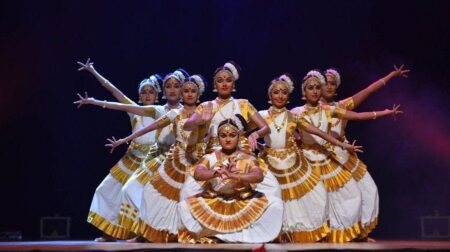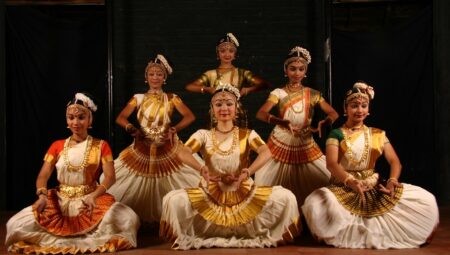Swathi Thirunnal structured and systematised Mohiniyattam. However, in the 19th-century the art form lost its dignity and was ostracized by the public.
Author: Nirmala Paniker
Kunchan Nambiar’s poetry and references to aesthetics accentuate Mohiniyattam’s repotire
Even though the 16th-Century literature Vyavaharamala mentioned Mohiniyattam, it was Kunchan Nambiar in the 18th Century who first described the costumes and movements of the art form.
Mohiniyattam or a similar dance form was mentioned in 16th-century literature Vyavaharamala and the historical records of the Travancore rulers.
Mohiniyattam or a similar dance form was mentioned in 16th-century literature Vyavaharamala and the historical records of the Travancore rulers.
A slew of treatises of yore and temple inscriptions are enough indications of the numerous dance forms staged in temples.
Devadasis were part of Kerala temples as well, shows history, though they were more respected and were even made queens, at times.
The present-day Mohininyattam is a beautiful combination of the Desi aspect of Kerala and the devadasi dance form that came from outside.
Sankaracharya mentions the lasya or grace of the Goddess in several of his verses, while the recurring theme of Mohiniyattam – the pain of a Nayika separated from the Nayaka, can be metaphorically compared to Jīvātma yearning to be reunited with the Paramātma.
The manuals for several Kerala art forms like Koodiyāṭṭaṁ and Nangiārkūttụ are said to have been formed during the age of the Kulasekharas, who followed the Chera dynasty in Kerala. The current day Mohiniyattam can be considered a dance form in the lasya style which imbibed the core principles of many ancient dance forms of Chera influence









